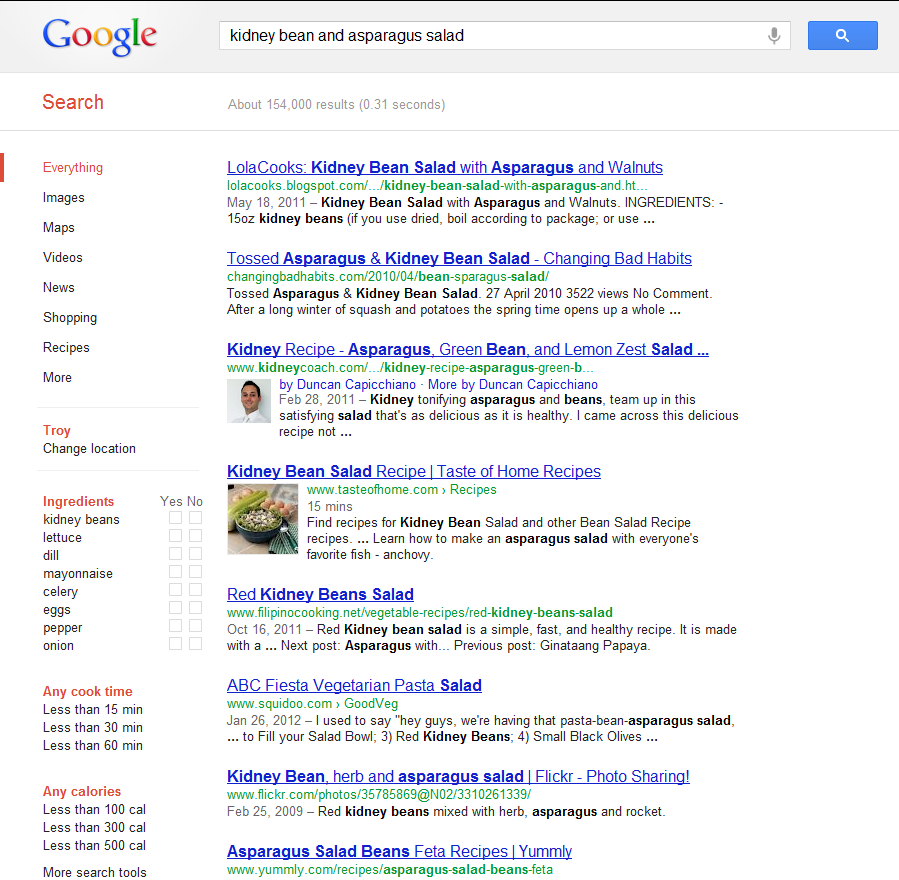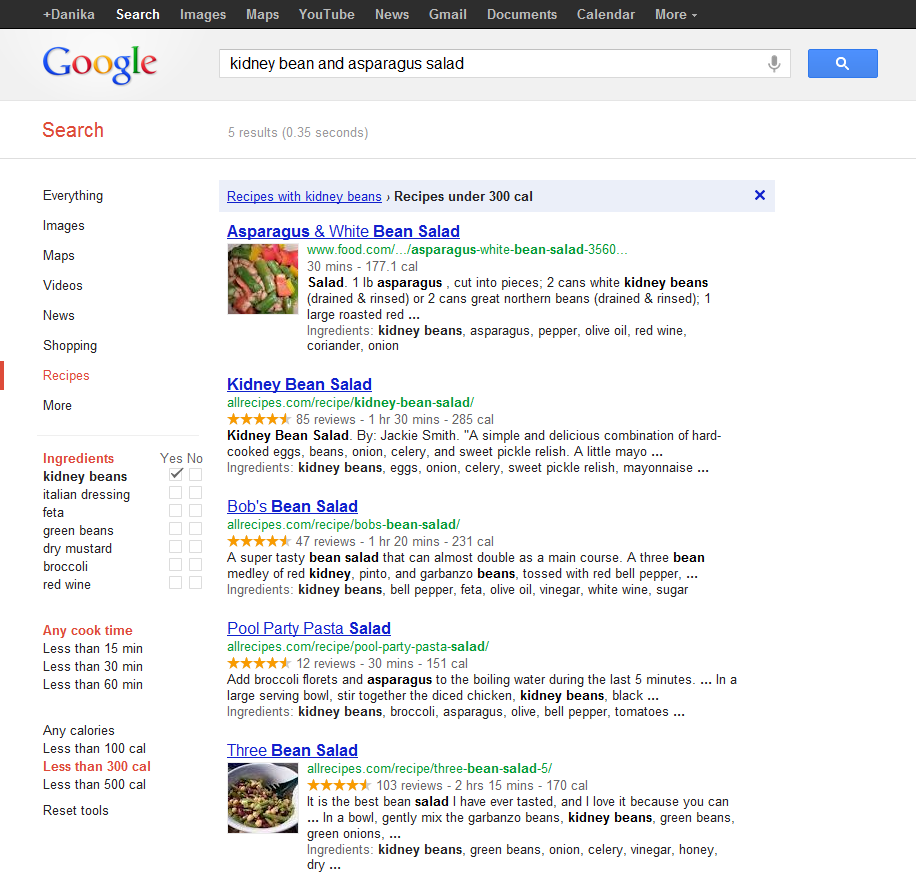There are two things in this world I will never stop loving: food and schemas (sorry, husband). I’ve been a self-proclaimed pseudo-foodie for quite some time now, involving myself with the local food blogging and Yelping community to their chagrin as much as possible. Through those relationships, I’ve realized the knowledge I take for granted, including ways to market and promote a food blog. Yes, the most important part of maintaining any blog is providing high quality, high value content, but good content can’t expose itself.
It needs a dash of marketing help.
That’s where a few technical online marketing techniques can come into play. You don’t have to be an SEO consultant to know how to do it. Want your recipe blog posts to get the exposure they deserve? Warm yourself to a new ingredient called “schemas.”
Schem-huh?
Schemas are a type of markup language that allow site owners to specify the context of content on your page. The ability to do this isn’t new, but the novelty of schemas is that they can be interpreted by multiple search engines, including Google, Bing, and Yahoo! Less work for you, a better search experience for users. But where do these two benefits come together? Let’s take a look at a search result for “kidney bean and asparagus salad”:

Here are my first page results, and I’m happy with my results so far. Google served me a nice mix of small food blogs and large recipe databases. I notice the search filter options on the left-hand side and decide that maybe I should narrow down my results a bit more. After all, I definitely want kidney beans, and I might want to find something under 300 calories.

Gah! Where did all the food blogs go? I took a quick look at the first result before I filtered my results, and LolaCooks’ kidney bean salad recipe definitely fits my criteria, so what happened? By using schemas I can get in on the filtering game so that Google and other search engines offering recipe-based filtering criteria can include me as users begin to narrow down their search. Now, let’s figure out how to use them.
Match Up Your Data
Local food blogger, Jen is Green, was kind enough to allow me to use one of her recipes as an example of how to implement schemas. Despite the unseasonably warm weather in the Capital Region today, a bowl of her Mom’s Secret Vegetarian Chili appeals to me.
There are ton of fields that may apply to a recipe post, so feel free to access the full list of recipe schemas. For practical purposes, I’ll focus on the ones that are commonly applicable to the food blogs I follow, namely:
- Description (description)
- Image (image)
- Name (name)
- Prep Time (prepTime)
- Cook Time (cookTime)
- Servings (recipeYield)
- Nutrition facts (nutrition)
- Ingredients (ingredients)
- Directions (recipeInstructions)
After you’ve written your recipe post, identify the sections of your recipe that match up with these fields. Using Jen’s recipe as an example, I may add some sections. Keep in mind that the schema content does not have to be clumped together, just as long as you keep your tags straight and close them when appropriate:
<div itemscope itemtype="https://schema.org/Recipe">
<img itemprop="image" src="http://www.jenisgreen.com/wp-content/uploads/2010/10/DSC03619.jpg /">
<span itemprop="name">Mom’s Secret Vegetarian Chili</span>
<span itemprop="description">Perfect meal for a rainy day!</span>
Prep Time: <meta itemprop="prepTime" content="PT15M">15 minutes
Cook time: <meta itemprop="cookTime" content="PT1H">1 hour, 50 minutes
Ingredients:
- <span itemprop="ingredients">1 large (1lb/12oz) can of diced tomatoes</span>
- <span itemprop="ingredients">1 can (15 oz) of Hunt’s Manwich Original sauce</span>
- <span itemprop="ingredients">1 1/2 cups of water</span>
- <span itemprop="ingredients">1 package of 30% less sodium chili seasoning mix</span>
- <span itemprop="ingredients">1/2 bag of Morning Star Veggie Crumbles</span>
- <span itemprop="ingredients">1/2 large sweet onion, chopped</span>
- <span itemprop="ingredients">1/2 large green pepper, chopped</span>
- <span itemprop="ingredients">1 TBSP of sugar</span>
- <span itemprop="ingredients">1 large can (2lbs/8oz) of dark red kidney beans</span>
- <span itemprop="ingredients">Small handful of shredded cheese</span>
Directions:
<span itemprop="recipeInstructions">
- In a large sauce pan, add all ingredients but kidney beans and cheese
- Bring to a boil
- Reduce heat to medium/low
- Cook for 1 hour and 30 minutes
- Drain and rinse kidney beans
- Add kidney beans to pot
- Cook for an additional 20 minutes
- Sprinkle your bowl of chili with cheese and enjoy! </span>
Makes <span itemprop="recipeYield">6 hearty servings</span>
<div itemprop="nutrition"
itemscope itemtype="https://schema.org/NutritionInformation">
Nutrition facts per serving:
<span itemprop="fatContent">4.6 grams fat</span>
</div>
</div>
Once you publish the recipe post, use Google Webmaster Tools Rich Snippets Testing Tool to verify that you implemented schemas correctly. It will show you the fields the Google bot was able to scrape from your page and how your page would display in search results.
This may all seem like gibberish to you, so feel free to plug in to these fields until you get the hang of it.
Don’t Shy Away from Nutritional Info
Keeping track of calorie information has become all the rage (especially in the Outspoken Media office), and offering this information can help you stay included in filtered search results. There are several easy methods and tools available to determine the nutritional data for your recipe:
- Add them by hand – The simplest method. Tally the total fat, carbs, protein, and calories from each ingredient based on what’s listed on the label.
- Wolgram|Alpha Nutritional Information Widget – This widget can only handle up to six ingredients, but it pulls nutrition information directly from Wolfram|Alpha’s database, ensuring data accuracy.
- SparkRecipes Nutrition Calculator – This tool can handle more ingredients, but you must create an account for access.
- Other recipe databases – Use allrecipes.com or simplyrecipes.com to search for similar recipes. Spices tend to account for very little in terms of nutritional value, so you can assume that if most ingredients line up, the nutritional value will be the same
Once you have your nutrition information, you can plug it directly into the nutrition facts schema described above.
Whatever you do, don’t be afraid of schemas. Thankfully, incorrectly using them cannot damage your rankings. However, successful implementation can only help, and will ensure your recipes stay in the running as users begin filtering their recipe results.

